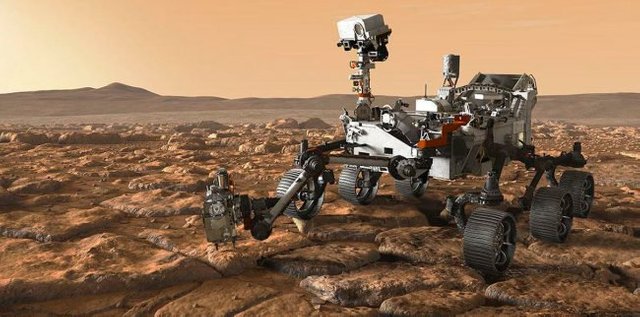The NASA will revise the methods of protecting other planets from us

NASA will have to attend to the issue of protecting the planets. The treaty on the use of outer space - yes, there is such - as well as laws and regulations are rooted in the days of the Cold War. They were written before scientists learned about the oceans on satellites near other planets, about living microorganisms that could tolerate the most extreme conditions, and before we started looking for life on Mars. In addition, techno-industrialists already intend to send people into space and, be sure, will achieve their goal.
Therefore, the staff of the NASA planetary defense department - yes, there is one - will have to correspond to the steepest department in the solar system and develop new methods of protection that will not allow earth bugs and microbes to lay their eggs on Andromeda (or elsewhere).
Some of the new obstacles were the result of the latest experiments and decades of scientific progress. The planetary defense has two main missions. "Reverse defense" means that nothing dangerous from outer space will fall on Earth. "Proactive protection" means that no Earth debris will fall into another world - and that no scientific probe from Earth will pollute the surface of another planet.
None of this has ever been a problem. The mission of returning samples from asteroids and comets is not a problem, because cosmic radiation sterilizes them. Rovers very carefully avoid parts of Mars, where life can be.
"But we are preparing to go in a place that can support life - the surface of Mars, the deep oceans of Europe and Enceladus," says Joseph Alexander, a consultant and former scientific director of NASA. "The private sector is becoming increasingly interested in Mars. The international community of players who want to visit different planets is growing and growing. The US has a plan to send people to Mars by 2030 ". In space it becomes crowded, and the more important it is not to be mistaken.
Therefore, Alexander's group recommends several changes. Moving the planetary protection department to the security department can open several blocked channels. The report also proposes to return to the early discussions of planetary defenders and planners of planetary missions and determine how clean everything should be that goes into space. Another proposal is to close the "regulatory gap" that allows commercial aerospace companies to neglect the rules of planetary protection. Obviously, Falcon 9, launched from Tesla, did not pass checks for cleanliness, so it's great that it will not have to intersect with something like a planet of 10,000 years old.
Missions and the development of asteroids in the future are not the only reasons to revise planetary protection. The planetary defense department does not always agree with the people who build the missiles, even from the beginning of the space program. "At the very beginning, it was the scientific community that advocated pollution control, the pre-emptive - for the preservation of science, the reverse - because responsibility," says John Rummel, a biologist and a member of the NASA planetary defense department who worked there from 1998 to 2006. "But if people do not understand how flights are arranged, you will have to dodge."
The point of breakthrough was the negotiations on the mission of Mars 2020. Some scientific tools have become revised versions of those used by "Curiosity", but since Mars 2020 also may try to return samples to Earth, the planetary protection department will comply with higher standards of purity. It is rumored that disagreements led to the sudden departure of the last employee of the planetary defense department, Cassie Conley.
The fact is that every time science makes progress, standards of cleanliness change. Scientists have more and more sensitive ways of searching for life and more ways to kill it on space vehicles until their departure from Earth. In practice, however, it turns out that one killing of terrestrial microorganisms before the mission is not enough. "They kill everything, but that does not mean that life on the spacecraft is no more," says Luther Beagle, JPL astrophysicist and lead researcher for the SHERLOC sensor located on the Mars 2020 manipulator. The device can remain simple with an organic shell that detectors can not see.
A source - https://hi-news.ru
Congratulations @blosom! You have completed the following achievement on Steemit and have been rewarded with new badge(s) :
Click on the badge to view your Board of Honor.
If you no longer want to receive notifications, reply to this comment with the word
STOPDo not miss the last post from @steemitboard:
SteemitBoard World Cup Contest - Russia vs Croatia
Participate in the SteemitBoard World Cup Contest!
Collect World Cup badges and win free SBD
Support the Gold Sponsors of the contest: @good-karma and @lukestokes